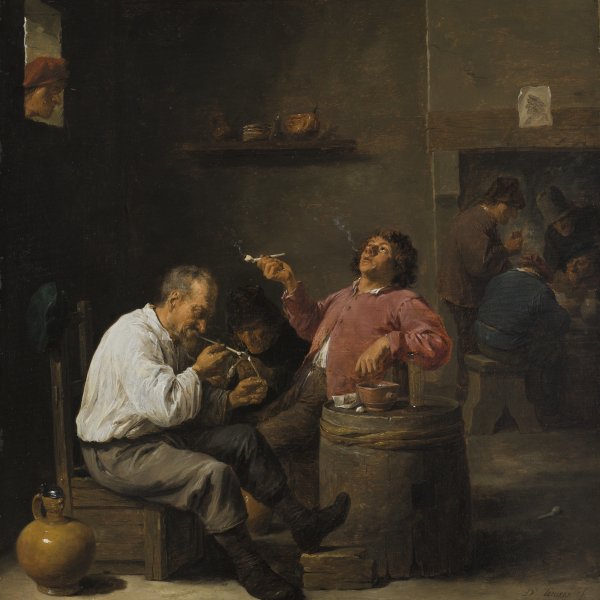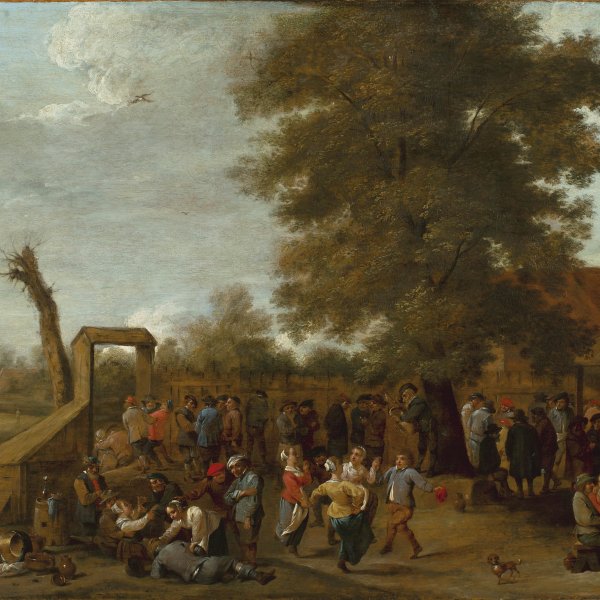David Teniers II
Antwerp, 1610-Brussels, 1690
David Teniers II trained with his father, an art dealer and painter of small history compositions, but from an early age he moved away from that type of painting and focused on genre scenes and the work of Adriaen Brouwer. Teniers joined the painters’ guild in Antwerp in 1632 or 1633 and his first known works date from this period. In 1637 he married Anna Brueghel, daughter of Jan Breughel. During the 1630s Teniers painted small religious compositions that were commissioned by the art dealer Crysostoom van Immerseel and sold on the Spanish art market. In Antwerp his genre scenes, which were very similar to those of Brouwer, were greatly in demand and achieved high prices. As a result, Teniers became one of the most successful painters of the day. In 1644 he was elected dean of the Antwerp painters’ guild. During his years in the city he undertook commissions for Antoine Triest, Bishop of Bruges, one of the most important patrons in the Netherlands, while from 1647 he began to work for the Archduke Leopold William, governor of the Southern Provinces. In the 1640s Teniers began to locate his genre scenes out of doors, presenting them in a frontal manner and including groups of aristocratic figures that watch the rustic events and celebrations depicted. After the death of Jan van den Hoecke in 1651 Teniers officially entered the service of the Archduke as court painter and moved to Brussels. In his new position he enlarged Leopold William’s outstanding art collection, travelling to London to acquire Italian works, particularly Venetian ones, from the collection of Charles I. Teniers edited the Theatrum pictorium, published in 1660, which comprised a selection of prints after works in his patron’s collection. He continued to work for Leopold William’s successor, don Juan of Austria, and also undertook commissions for Queen Christina of Sweden, Prince William of Orange and King Philip IV of Spain. In his late works painted from 1660 onwards Teniers focused on pastoral scenes.






